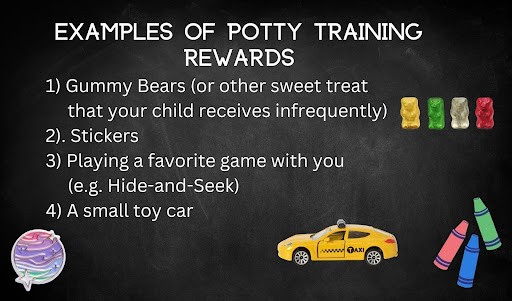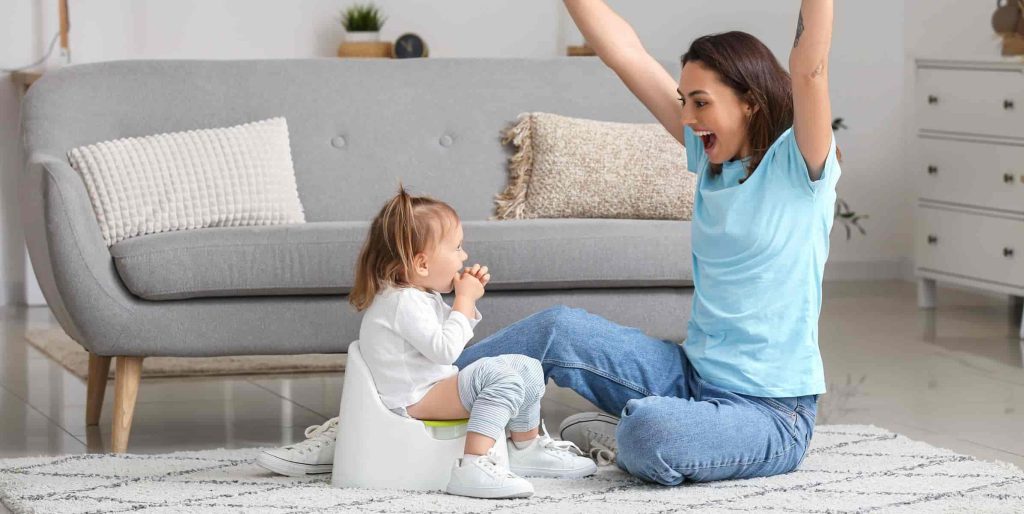Developing an Autism Potty-Training schedule for a child diagnosed with autism spectrum disorder may be difficult especially if you don’t know where to start. These tips may help you make some progress and to build a general plan.
Every child is different, however, and they often need an individualized plan with help from a professional.
Either way, the advice below is likely to be a part of any effective plan to potty train a child with autism.
1. Potty Training Autism Readiness
The first step in preparing for potty training your child is to first determine if you and your child are ready for potty training.
A few questions that you can ask yourself to determine potty readiness are:
“Is The Timing Right?”
Children diagnosed with autism develop at a slower rate than other children their age and therefore it is important to not rush the potty-training process.
Typically, children begin to toilet train between the ages of two and five.
It is often advised that children with autism wait to be potty-trained until the age of four years old to allow for skills such as motor planning and communication to form.
“Will All Individuals Involved Be Able To Follow The Plan?”
With potty training, consistency is key. After you feel your child is ready to begin potty training, the first step is to establish a schedule of trips to the toilet.
These trips start out pretty close together to ensure you capture opportunities to eliminate in the toilet. This can be a significant commitment in time and effort and it’s important for you and anyone else who might care for the child to be prepared.
If you are unable to stick with the schedule consistently then it may not be the right time to begin potty training.
“Is Your Child Able To Communicate The Need To Go To The Bathroom?”
While the schedule of potty trips increases the likelihood that your child will successfully use the toilet, another important aspect of being fully independent is being able to communicate the need to go.
Communication comes in many forms and isn’t just talking. Forms of communication can include:
- Speech
- Gestures
- Sign Language
- Using Picture Cards
Your child should have some experience and success with using one of these forms of communication to meet other needs like letting you know when they’re hungry or that they want something.
2. Establish a Schedule
The first step is usually setting a frequent schedule of trips to the potty.
By having your child sit on the toilet frequently, they will eventually use the toilet successfully by chance.
Once this happens, you can start building on that first success.
Using the toilet should be a big deal so make sure you’re ready with an exciting reward.
Rewards For Potty Training
You know your child best. Choose something they like a lot. You can reward sitting on the toilet, but save something special for success.
For Example:
Ensure that your child has lots of opportunities to go to the bathroom. To start, take your child to the bathroom every 30 minutes with your child sitting on the toilet for at least 3 minutes. Taking them frequently prevents your child from having accidents. When your child is consistently accident free, gradually increase the time that you take your child to the bathroom (e.g. from 30 minutes to 60 minutes, then from 60 minutes to 90 minutes, etc).
3. Collect Materials
Before beginning to implement your potty-training plan, you should first collect the materials necessary for the plan to be successful.
These materials could include:
- Two Weeks’ Worth Of Underwear,
- A Timer For The 30-Minute Intervals
- 3 Minutes Of Sitting
- A Stool And Toilet Seat
- If Necessary, Wipes/Toilet Paper
- Rewards
- Materials Needed To Teach Communication
- Example: Picture Cards If Needed.
4. Implementation and Consistency
Now that you have established your goals, collected your materials, and developed a plan, it is time to implement.
Pick your start date and begin to implement your schedule. Make sure that everyone involved understands the schedule and will follow through.
Children with autism do best when a consistent schedule is developed and utilized.
Remember consistency is key!
Switching To Underwear
Another strategy that is often important is switching to underwear. Of course, this will make accidents more work to clean up, but diapers and pull-ups can prevent children from learning about the discomfort of being wet when they don’t use the toilet.
Drink More Fluids
Along with rewards for using the toilet, your child should begin to learn that learning these skills is worth the effort. Finally, encourage your child to drink more fluids to allow for more opportunities to successfully void in the toilet.
5. Re-evaluate Goals
After a few weeks of implementing your potty-training plan, reevaluate your initial goals.
- Has your child reached the goals you established?
- Are there any goals that need to be changed for your child’s needs?
- Are there new goals that you would like to work towards?
Progress might be slow, but you should see some progress. If not, you’ll want to change your plan.
There’s no use continuing an ineffective plan and you’ll want to avoid delaying progress with a better plan. If you’re stumped on what you should be doing differently, you should reach out to an autism therapy specialist like a BCBA for assistance.
6. Generalization
When discussing generalization, we are looking at the settings and individuals that were initially selected for the primary potty-training plan and then select other places or people that we would want the potty training to work with as well.
For example, if you have been working with your child at home at using the restroom effectively then it may be important to transfer the schedule to school with your child’s teacher.
You should not assume that the skills will transfer to school, public restrooms, or houses of friends or family.
Barriers to Autism Potty Training
A few barriers that may need to be considered when developing a potty-training plan are:
- Communication
- Motor Planning
- Dressing
First, if your child is unable to communicate their need to use the restroom then it may be difficult to get them to a point of being fully potty-trained.
Communication
One way to address this would be to establish a functional communication system using
- Signs
- Words
- Gestures
- Pictures
that will allow your child to notify someone that they need to use the restroom.
Motor Planning & Dressing
The next two barriers, motor planning, and dressing go together in that the child will need to learn the motor steps required to successfully use the restroom.
This includes:
- Transportation To The Bathroom
- Opening The Door
- Pulling Pants
- And Underwear Down
- Sitting On The Toilet
- Wiping
- Pulling Pants Up
- And Washing Hands
If your child is unable to complete these motor-planning steps, then there would be some initial skills that could be addressed prior to potty training.
We are Here to Help! Apara Autism Center is Committed to Helping Your Child Reach Pivotal Skills
Potty training can be overwhelming. The good news is, you do not have to do it alone. Our ABA specialists will support your child and family through this process, developing a plan that works specifically for your child. Contact us today and request a free consultation!






